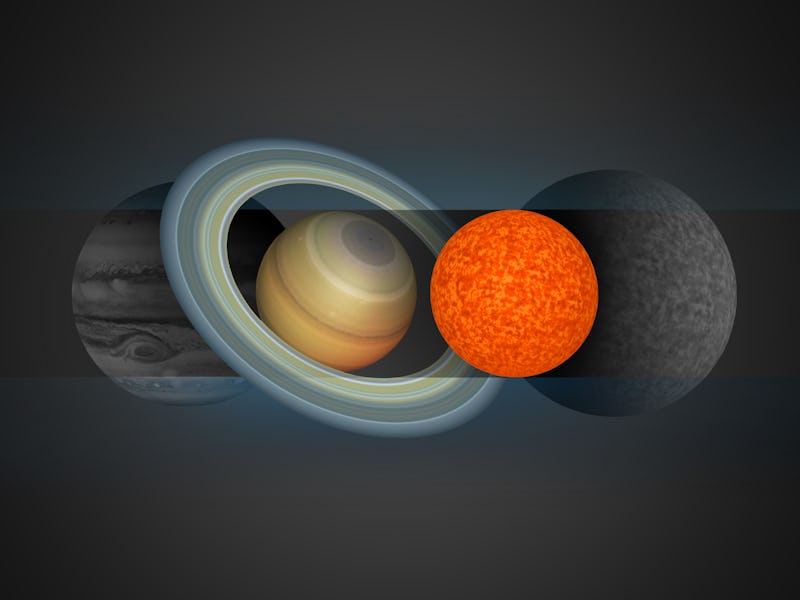Astronomers Have Discovered the Smallest Star Ever

Astronomers have identified the tiniest star ever found, and it’s likely as small as a star can get. On Tuesday, a research team from the University of Cambridge announced the discovery of a star by the memorable name of “EBLM J0555-57Ab,” which is about the size of Saturn and exists some 600 light-years from New York City.
The news bodes well for the detection of other small stars, which are the bodies astronomers most frequently analyze for hosting Earth-like planets with the potential to support life.
For a celestial body to qualify as a “star,” its core must contain hydrogen fusing into helium, a nuclear reaction that helps power the star. EBLM J0555-57Ab has just enough mass to create the pressure that enables this reaction: With any less mass, it would be a brown dwarf, which is an object in between a planet and a star.
“Our discovery reveals how small stars can be,” Alexander Boetticher, the study’s lead author, said in a press statement.
The star is about the size of the planet Saturn, which when compared to Earth is still pretty big.
Small stars like this one — i.e. those with a mass and radius measuring less than 20 percent of that of the Sun — aren’t just cool because they’re novel (though it’s true that we rarely find them). They’re crucial to our ongoing search for planets that might support life, because they’re the most common type of star in the universe, and “they appear to host many Earth-size planets,” study co-author Amaury Triaud tells Inverse.
“Very low-mass stars are difficult to observe because they are so small and dim, but they are very common in our galaxy, much more so than sun-like stars,” Boetticher tells Inverse. “For that reason it is important that we understand them! Planets capable of sustaining liquid water probably exist around the low mass stars too, although we are yet to confirm this. The recently discovered TRAPPIST-1 planetary system (around a very low-mass star) is a promising prospect.”
TRAPPIST-1 is a relatively cool dwarf star; in February, astronomers discovered that it hosts a whopping seven Earth-like planets, three of which have the potential to possess water. TRAPPIST-1 and EBLM J0555-57Ab have similar masses, but the latter’s radius is almost a third smaller than TRAPPIST-1.
EBLM J0555-57Ab's mass and radius compared to Jupiter, Saturn, and TRAPPIST-1.
Finding these small stars can often be more difficult than locating a planet. Actually, astronomers were able to detect EBLM J0555-57Ab with a method typically used for planet-hunting, because the star is located in a “binary system,” which means that it’s actually one of two stars within a single solar system (most stars are part of multi-stellar systems). Researchers observed that the larger star in the system darkened at regular intervals and deduced that an orbiting smaller star was passing in front of it.
Similarly: “The way we detect a planet is when it passes in front of its parent star,” Triaud tells Inverse. “The planet casts a shadow, called a transit, which we notice as a dimming of the star.”
Astronomers will continue to use this method to detect small stars. It could be only a matter of time before we find one that hosts a planet with life; NASA certainly thinks so.